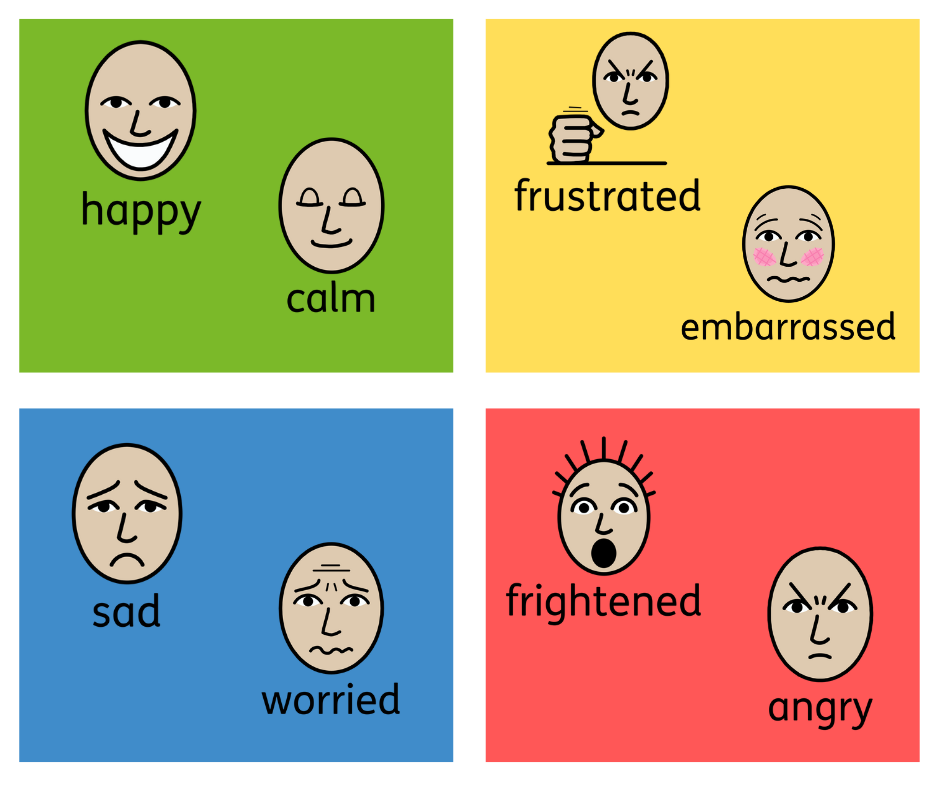‘Why are people with Down’s syndrome so happy?’ - Myth Busting
While many often associate Down’s syndrome with big smiling faces (of which there are many!), we are here to bust that myth.
Damaging pre-conceptions
People with learning difficulties, such as Down’s syndrome, autism/ASD, Williams syndrome, and more, experience a wide range of emotions, just as their neurotypical peers do. Not only do our learners experience many emotions, there is evidence to suggest that they are at a higher risk of mental health problems compared to the rest of the population.
“At least half of all children and adults with Down syndrome will face a major mental health concern during their life” - NDSS
While there are factors which may make members of our community more susceptible to mental health problems (see Mencap’s website for further information), there is also evidence to suggest that our learners may find it harder to recognise and understand emotions. This is not universal for all individuals, and isn’t the case for all emotions. Some individuals will find it easier to recognise a wider range of emotions, whereas others may be more likely to recognise only ‘strong’ emotions.
So - even though there is a fairly positive perception that individuals with Down’s syndrome are always happy, this contributes to negative stereotypes around the wider community of individuals with learning difficulties. People with Down’s syndrome are able to feel, recognise, and understand just as wide a range of emotions as anyone else. Not acknowledging this fact just helps to perpetuate stereotypes about the SEND community.
What’s so wrong with that?
Not only does this myth perpetuate these incorrect stereotypes, it also holds our community back in other ways. Failing to understand that they feel a wide range of emotions often means their feelings can be dismissed. This can be incredibly harmful, particularly when they are trying desperately to express their feelings and their needs - it’s just another way that our community’s autonomy and control of their own lives can be taken away.
It often means that the teaching they need isn’t provided either. If we all assume that these individuals are happy all the time, what need do they have to understand and regulate their own emotions? Key teaching which supports this is missed. They can then miss out on social or employment opportunities later in life because they cannot regulate their emotions, or understand how they and others are feeling.
And, it can open them up to further abuse. If they can’t identify their feelings, they are less likely to identify situations which make them feel frightened, embarrassed, angry, or worried. Situations like mate crime, bullying, cuckooing, and more. How can they call for help if they can’t work out what’s wrong?
So these stereotypes can further disable our community, and reduce them to infantilised, always-happy individuals. This is so far from reality.
How can we help?
Learning for Life is here to support the SEND community to develop the skills to effectively recognise, understand, and respond to a variety of emotions within themselves (introspection) and others.
These can be used in schools, community groups, and at home.
This covers both basic emotions (happy, sad), and some more complex emotions (embarrassed, frustrated) which are slightly more nuanced.
The ‘Worried’ video is of crucial importance to the Down’s syndrome community as generalised anxiety disorder is one of the most prevalent mental health problems.
We always teach in a very clear way with opportunity for discussion in sessions. So we recommend that educators spend time personalising the teaching to specific individuals. How one person cheers themself up is different from another - and that’s okay! Creating lasting life skills will be most effective when it’s directly relevant to them.
High-quality, accessible videos and resources have been created in the Learning for Life series ‘Emotions’, which is free to sign up to and access.
You can read more about how this series supports teaching emotions through our other blogs: ‘Frustrated with Teaching Emotions’ and ‘Why Use Colour to Categorise Emotions’.
Sources: mencap, Cebula et al via DS Scotland, National Down Syndrome Society (US)


